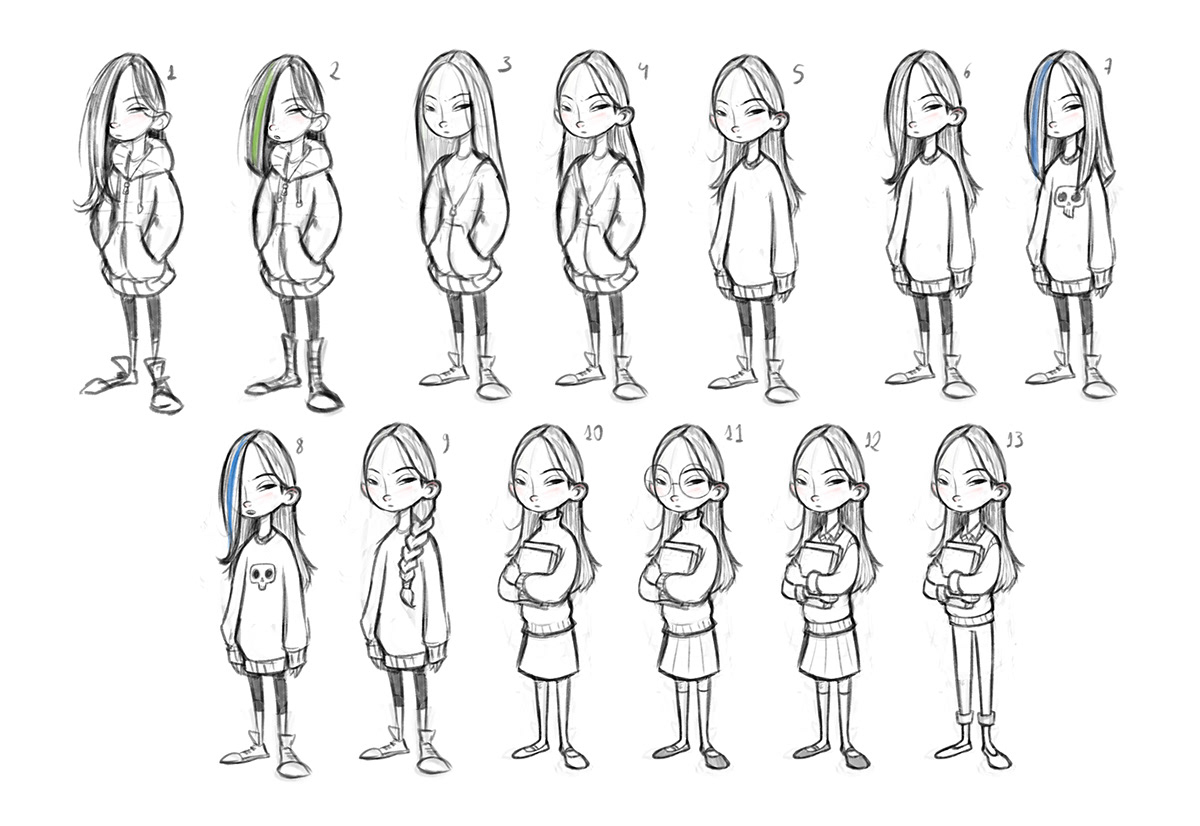Animated characters can enchant people of all ages, and their appearance is very important for their success. A well-designed character can make a strong impression and become famous, but if it’s not designed well, it can be forgotten easily. Creating these characters is called character design animation, a complicated art form that needs to think about every detail.
From how they look to their personalities and behavior, every part of a character needs to be made carefully to create a believable character that people can connect with, even after the show is over.
Fundamentals of Character Design
Character design animation is a crucial aspect of creating any story or narrative, whether it be a book, movie, or video game. It is through the characters that the audience is able to connect with the story and become invested in it. Therefore, it is important to create characters that are not only interesting but also believable. In this regard, the physical appearance and personality traits of a character play a significant role.
A. Physical Appearance
The physical appearance of a character is the first thing that the audience notices and it can convey a lot of information about the character. It includes their proportions, anatomy, facial features, and expressions, as well as their costume and accessories.
1. Proportions and Anatomy: Proportions and anatomy refer to the size and shape of a character’s body. These factors can affect a character’s overall appearance, personality, and even their abilities.
For example, a character with a larger body size may be perceived as strong and powerful, while a character with a smaller body size may be perceived as weak or fragile. Similarly, the shape of a character’s body can tell a lot about their personality.
For instance, a character with a lean and muscular body may be seen as athletic, while a character with a round and plump body may be seen as jolly or friendly.
2. Facial Features and Expressions: Facial features and expressions are an important aspect of a character’s physical appearance. These features can convey a lot of emotions and personality traits. For instance, a character with a sharp nose and thin lips may be seen as cunning or sly, while a character with a round face and full lips may be seen as friendly or welcoming.
Similarly, the expressions on a character’s face can tell a lot about their emotional state. For example, a character with a scowl on their face may be seen as angry or frustrated, while a character with a smile on their face may be seen as happy or content.
3. Costume and Accessories: Costume and accessories refer to the clothing and other items that a character wears or carries. These elements can tell a lot about a character’s personality, occupation, and social status. For example, a character wearing a suit and tie may be seen as professional and successful, while a character wearing a leather jacket and torn jeans may be seen as rebellious or edgy.
Similarly, the accessories that a character carries can tell a lot about their interests and hobbies. For instance, a character carrying a guitar may be seen as a musician or artist, while a character carrying a briefcase may be seen as a businessperson.
B. Personality Traits
The personality traits of a character are just as important as their physical appearance. These traits can determine how a character interacts with the world around them and with other characters in the story. It includes their backstory and motivations, unique personality quirks, and alignment with the story’s theme.
1. Backstory and Motivations: A character’s backstory and motivations refer to the events and experiences that have shaped their personality. It includes their upbringing, family history, and past relationships. Similarly, a character’s motivations are the reasons why they do what they do.
For example, a character may be motivated by revenge, love, or justice. Understanding a character’s backstory and motivations can help writers create a more well-rounded and believable character.
2. Unique Personality Quirks: Unique personality quirks are the little idiosyncrasies that make a character stand out. It can include things like a nervous tick, a particular way of speaking, or a quirky fashion sense. These quirks can help make a character more relatable and interesting to the audience.
3. Alignment with the Story’s Theme: Finally, a character’s personality traits should align with the story’s theme. The theme is the underlying message or moral of the story.
For instance, if the theme of the story is about overcoming fear, then the main character should have a personality trait that reflects this. They may be brave, adventurous, or determined. A character that is not aligned with the story’s theme can feel out of place and detract from the overall story.
Animation Considerations
Creating animations requires a lot of attention to detail to make sure that the final product is engaging, realistic, and effective. There are several key considerations that animators should keep in mind when working on an animation project. In this article, we’ll be discussing the following animation considerations: Movement and Gesture, Expressive Facial Animation, and Dynamic Posing.
A. Movement and Gesture
1. Fluidity and Natural Motion
When creating animations, it’s important to ensure that the movements of the characters are fluid and natural. This means that the movements should look realistic and not jerky or robotic. Animators should pay attention to the timing and spacing of the movements to ensure that they flow naturally.
2. Consistency in Movement Style
Another important consideration for movement and gesture is consistency. Characters should move in a consistent style throughout the animation to maintain coherence and avoid looking disjointed. Consistency helps create a sense of continuity and allows the audience to follow the story more easily.
B. Expressive Facial Animation
1. Lip Syncing and Facial Expressions
Facial animation is a crucial part of creating engaging characters. The character’s mouth movements should match the words they’re speaking, and their facial expressions should match their emotions. This is referred to as lip-syncing and facial expressions. Careful attention should be paid to the details of the character’s face to ensure that the expressions are realistic and effective.
2. Emotionally Resonant Eyes
The eyes are often referred to as the “windows to the soul.” They can convey a lot of emotion and help the audience connect with the character on a deeper level. It’s crucial to make sure that the eyes are expressive and convey the appropriate emotions for the character and the scene.
C. Dynamic Posing
1. Postures Reflecting Mood or Situation
Dynamic posing is all about creating interesting and engaging character poses that reflect their mood or situation. The character’s posture can convey a lot of information to the audience and help them understand the character’s emotions or intentions. Animators should pay careful attention to the character’s body language and make sure that it’s consistent with their personality and the scene.
2. Consistent Posing Across Scenes
Finally, it’s important to maintain consistency in posing across different scenes. This can help to create a sense of continuity in the animation and avoid any jarring transitions. Consistent posing can also help the audience follow the story more easily and understand the character’s emotional journey.
Creating effective animations requires careful attention to detail and a deep understanding of the principles of movement and gesture, facial animation, and dynamic posing. By focusing on these important considerations, animators can create engaging and effective animations that connect with their audience on a deeper level.
Wrapping Up
Character design animation is a complex art form that requires attention to detail in every aspect of a character’s appearance and personality. From the physical appearance to the personality traits, every aspect of a character must carefully create a believable and relatable character that audiences can connect with.
Animators must also consider important animation considerations such as fluidity and natural motion, expressive facial animation, and dynamic posing to create engaging and effective animations that connect with their audience on a deeper level. By taking these considerations into account, animators can create memorable and engaging animated characters that leave a lasting impression on their audience.


